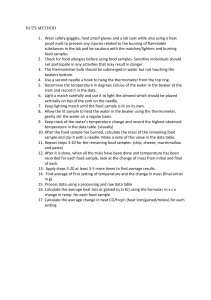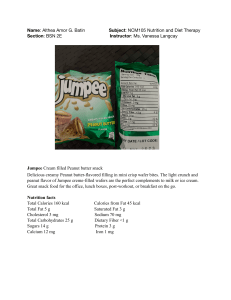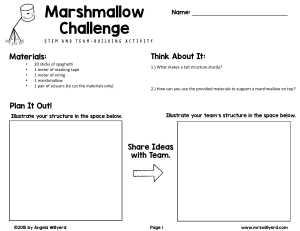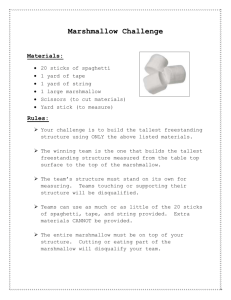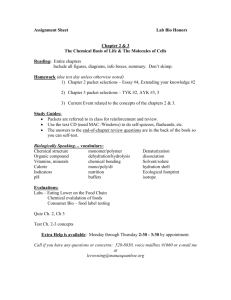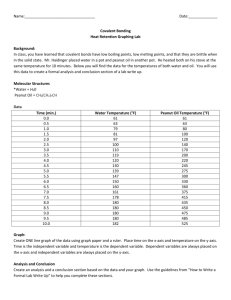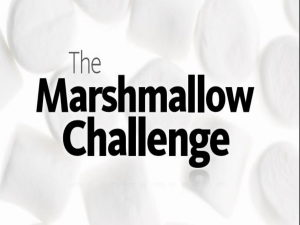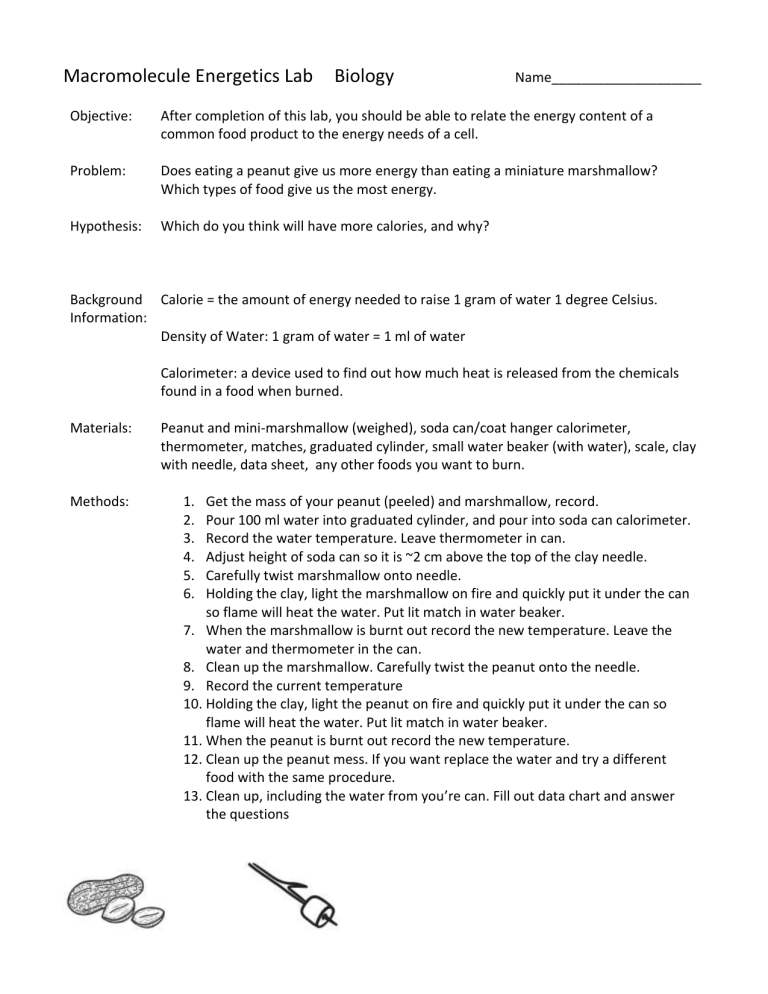
Macromolecule Energetics Lab Biology Name____________________ Objective: After completion of this lab, you should be able to relate the energy content of a common food product to the energy needs of a cell. Problem: Does eating a peanut give us more energy than eating a miniature marshmallow? Which types of food give us the most energy. Hypothesis: Which do you think will have more calories, and why? Background Calorie = the amount of energy needed to raise 1 gram of water 1 degree Celsius. Information: Density of Water: 1 gram of water = 1 ml of water Calorimeter: a device used to find out how much heat is released from the chemicals found in a food when burned. Materials: Methods: Peanut and mini-marshmallow (weighed), soda can/coat hanger calorimeter, thermometer, matches, graduated cylinder, small water beaker (with water), scale, clay with needle, data sheet, any other foods you want to burn. 1. 2. 3. 4. 5. 6. Get the mass of your peanut (peeled) and marshmallow, record. Pour 100 ml water into graduated cylinder, and pour into soda can calorimeter. Record the water temperature. Leave thermometer in can. Adjust height of soda can so it is ~2 cm above the top of the clay needle. Carefully twist marshmallow onto needle. Holding the clay, light the marshmallow on fire and quickly put it under the can so flame will heat the water. Put lit match in water beaker. 7. When the marshmallow is burnt out record the new temperature. Leave the water and thermometer in the can. 8. Clean up the marshmallow. Carefully twist the peanut onto the needle. 9. Record the current temperature 10. Holding the clay, light the peanut on fire and quickly put it under the can so flame will heat the water. Put lit match in water beaker. 11. When the peanut is burnt out record the new temperature. 12. Clean up the peanut mess. If you want replace the water and try a different food with the same procedure. 13. Clean up, including the water from you’re can. Fill out data chart and answer the questions Data: Marshmallow Peanut Other (optional)_____________ Mass of food (grams) Volume of water (ml) Grams of water (1 ml = 1 g) Water start temperature Water end temperature Temperature change (C) Calories Calories/gram Kilocalories (to compare with food labels) Calories 1000 Results: Describe what you see with your data: Conclusions: Describe what your results mean. How does this apply to the real world? Who would be interested in this information? Next steps: What could be done differently or better? What is a similar study to try next?
